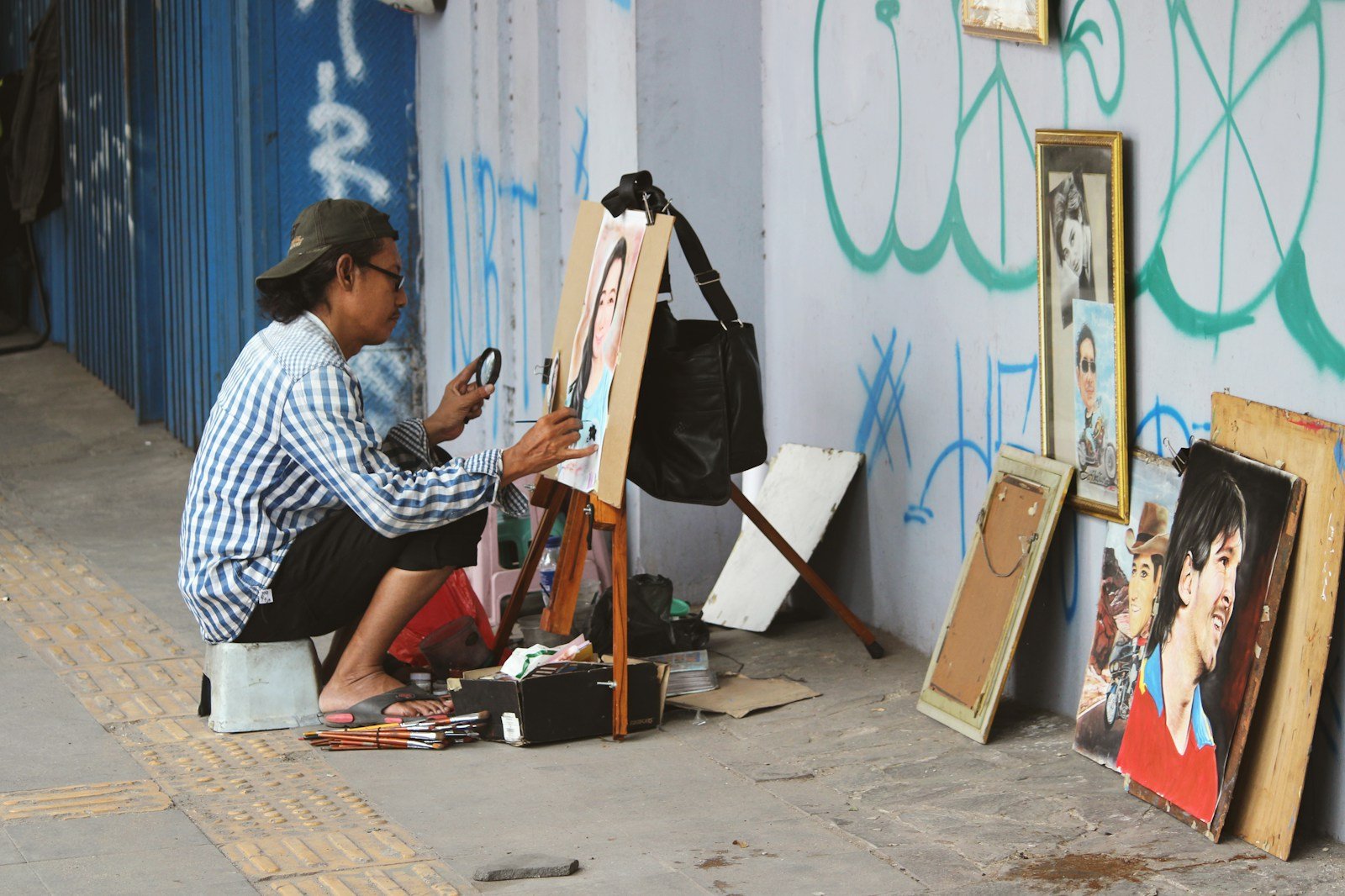Street art has a rich and diverse history dating back to ancient civilizations.
From cave paintings and petroglyphs to inscriptions on city walls, the practice of creating art in public spaces has always been a powerful form of expression. In more recent times, the 20th century saw the emergence of graffiti as a form of urban art, with artists using spray paint to make their mark on the streets of cities around the world.
During the 1970s and 1980s, street art evolved into a global phenomenon, with artists like Keith Haring and Jean-Michel Basquiat gaining recognition for their vibrant and politically charged works. The rise of hip-hop culture and the proliferation of street art festivals further contributed to the popularity and visibility of this art form, leading to a more widespread acceptance and appreciation of street art in mainstream society.
Origins of Urban Graffiti
Urban graffiti can trace its roots back to ancient civilizations where markings and symbols were used to communicate ideas or mark territories. However, modern urban graffiti as we know it today found its beginnings in the late 1960s and early 1970s in cities like New York and Philadelphia. The youth in these urban centers utilized public spaces as canvases to express themselves and make bold statements.
Early graffiti artists often used spray paint and markers to create their messages on city walls, subway cars, and buildings. This form of expression quickly gained momentum as a way for marginalized communities to reclaim public spaces and challenge societal norms. Graffiti art became a powerful tool for self-expression and a means to bring attention to social issues that were often overlooked.
Evolution of Street Art Techniques
Street art techniques have undergone significant evolution over the years, reflecting the changing landscape of urban artistic expression. Initially characterized by simple spray-painted tags and graffiti, street art has evolved to encompass a diverse array of techniques and mediums. Artists utilize stencils, wheatpaste, murals, and installations to convey their messages in impactful ways, transcending traditional notions of artistry.
The advent of technology has further revolutionized street art techniques, with artists now incorporating digital elements such as augmented reality and projection mapping into their works. These innovative approaches not only enhance the visual impact of street art but also allow for greater interactivity and engagement with viewers. As street art continues to push boundaries and redefine artistic norms, the evolution of techniques plays a crucial role in shaping the future of urban artistry.
Impact of Street Art on Urban Culture
Street art has undeniably left a lasting impact on urban culture worldwide. Through vibrant murals, thought-provoking messages, and visually captivating imagery, street art has brought life and a sense of identity to the streets of cities around the globe. In many urban neighborhoods, street art serves as a form of self-expression for artists, as well as a way to communicate important social issues and narratives within the community.
Moreover, street art has the power to transform neglected spaces into vibrant hubs of creativity and storytelling. By reclaiming public spaces and turning them into open-air galleries, artists have sparked conversations, inspired change, and brought communities together. The presence of street art in urban areas not only adds aesthetic value but also serves as a tool for reflection, sparking dialogue and challenging the status quo within society.
Famous Street Artists Around the World
Banksy, the enigmatic British street artist, is renowned for his provocative stencil work and social commentary. His identity has remained a closely guarded secret, adding to the mystique surrounding his art. Banksy’s pieces can be found across the globe, capturing the attention of art enthusiasts and critics alike with their powerful messages and striking visuals.
One of the iconic figures in the street art scene is Shepard Fairey, the American artist best known for his “Obey Giant” campaign and the famous Barack Obama “Hope” poster. Fairey’s work often blends pop culture, politics, and activism to create visually arresting pieces that challenge viewers to think critically about the world around them. His art has garnered widespread acclaim and has made a lasting impact on the urban art landscape.

Controversies Surrounding Street Art
Street art has long been a topic of heated debate and controversy in both artistic and urban planning circles. One of the main concerns that critics raise is the legality of street art – many argue that it constitutes vandalism and defaces public property, while supporters counter that it is a form of artistic expression that enriches the urban landscape.
Furthermore, street art often blurs the line between what is considered art and what is deemed as graffiti. Some argue that the ephemeral nature of street art challenges traditional notions of permanence in art, while others criticize it for its lack of formal training and adherence to artistic conventions. These ongoing controversies highlight the complex relationship between street art as a form of creative expression and its impact on public spaces.
Legalities and Regulations of Street Art
Street art has often found itself at odds with the law, as artists navigate the fine line between artistic expression and vandalism. Many cities have strict regulations in place to control where and how street art can be displayed. Artists may face fines or even criminal charges if they are caught creating unauthorized works in public spaces.
Despite the legal challenges, some cities have embraced street art as a way to revitalize urban areas and foster creativity. Certain places have designated legal walls or graffiti zones where artists can freely express themselves without fear of legal repercussions. These initiatives aim to strike a balance between the desire for artistic freedom and the need to maintain public spaces.
Street Art as a Form of Political Activism
Street art has long served as a powerful medium for political activism, allowing artists to visually express their dissent and challenge societal norms. Through thought-provoking images and messages displayed in public spaces, street artists aim to raise awareness, provoke dialogue, and catalyze social change. By utilizing the cityscape as their canvas, these artists bypass traditional art institutions and directly engage with the public, amplifying their political messages to a wider audience.
The inherent subversive nature of street art gives voice to marginalized communities and sheds light on pressing social issues that are often overlooked. Whether advocating for human rights, environmental protection, or political reform, street artists use their creativity to spark conversations and inspire action. In a world inundated with visual noise, street art as a form of political activism stands out as a bold and unapologetic means of challenging the status quo and championing a more just and equitable society.
Influence of Street Art on Mainstream Art
Street art’s influence on mainstream art is undeniable, as the once marginalized form has gradually seeped into the art world’s consciousness. What was once considered vandalism is now often celebrated for its raw and unapologetic nature. Mainstream artists have begun incorporating street art techniques and aesthetics into their work, blurring the lines between traditional and contemporary art practices.
The vibrant colors, bold lines, and powerful messages characteristic of street art have brought a new energy and urgency to mainstream art. This infusion of street art elements has injected a sense of rebelliousness and underground culture into the art world, challenging conventions and pushing boundaries. As a result, mainstream art has become more diverse and inclusive, drawing inspiration from the streets and embracing the spirit of artistic freedom that street art embodies.
Future Trends in Street Art
As street art continues to evolve in the global art scene, the future trends of this dynamic art form are expected to push boundaries and challenge traditional norms. Artists are exploring new mediums and techniques to create visually compelling works that speak to social issues and resonate with the public. From augmented reality street art to interactive installations, the integration of technology is set to revolutionize the way we experience and interact with street art in urban spaces.
Furthermore, there is a growing emphasis on sustainability in street art, with artists using eco-friendly materials and techniques to create art that is not only visually impactful but also environmentally conscious. Collaborative projects between artists and local communities are on the rise, fostering a sense of unity and inclusivity within the street art scene. By harnessing the power of art to convey powerful messages and spark meaningful conversations, the future of street art is set to be both innovative and socially relevant.




